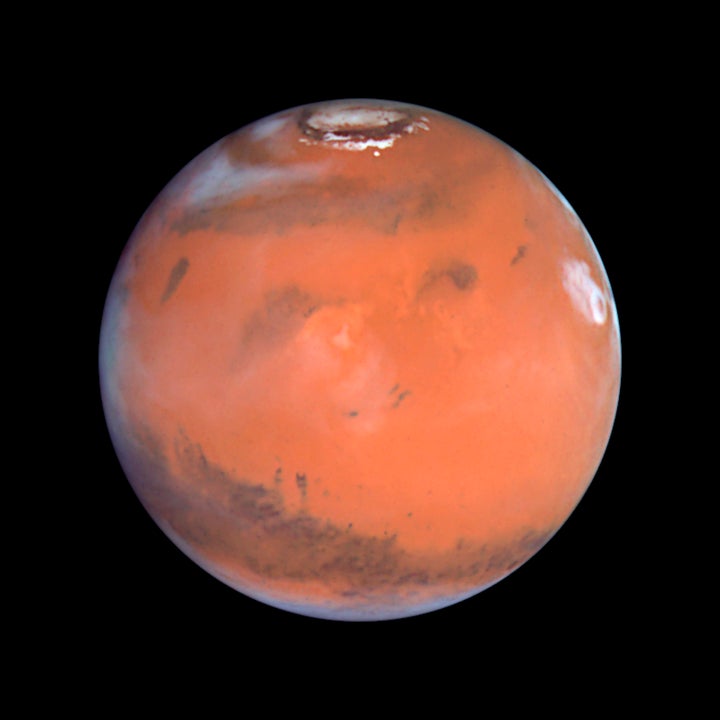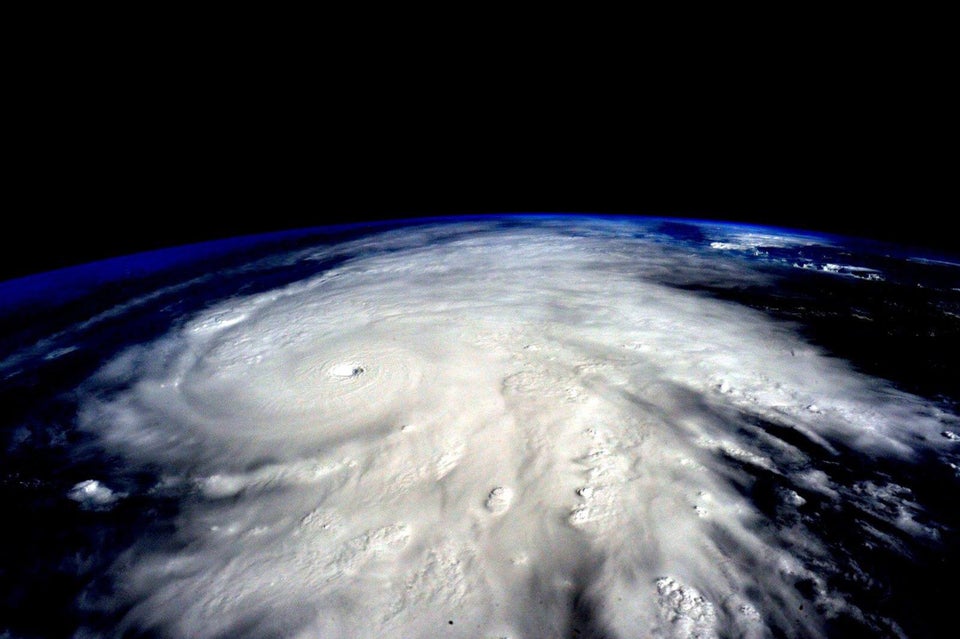
“Why should we study Mars, when there is still so much to learn here on Earth?” ask those who are skeptical about the benefits of space exploration. The answer, of course, lies in the fact that the two planets are remarkably similar, yet distinctly different in important ways. Quite simply, studying Mars can teach us much about the Earth.
Mars, like Earth, has an atmosphere, winds, clouds, weather, and dust storms. It also has massive volcanoes, great rift valleys, dry river channels, and huge sand seas. Mars has polar ice caps, snow banks, and glaciers that have striking similarities to those here on Earth. And, most importantly, Mars has evidence for liquid water and habitable environments, both in its past and today. This breadth of landforms, processes, and environments, by themselves, make Mars a fascinating place to explore. But the most compelling reason to study Mars is not necessarily in the similarities, but rather in the differences with Earth that will help us to better understand our own planet’s history and evolution. Why is the current climate of Mars, which is very cold and dry, so different from the Earth’s? Why have the climates of the two planets diverged over time? What processes have led to those differences? And what can we learn about possible future changes in our own climate from studying Mars?
Perhaps the most fundamental insight that will come from comparing Mars to Earth is in the understanding that we will gain in how life emerged on Earth and what conditions were essential to its origin and persistence. Water is one of the key necessities for life, and evidence for water early in Mars’s history, at the same time when life was gaining a foothold on Earth, has been discovered numerous times over the past fifteen years, with each of these discoveries providing unique new insights. We have found mineral evidence for ancient hot springs on Mars similar to those found today in Yellowstone National Park: massive salt deposits that formed when lakes of salty water evaporated, sediments deposited in fresh water streams and deltas, minerals that formed from highly acidic underground water, and pure snow and ice. Each of these ancient, water-rich environments would have provided life with a different habitat in which to originate and survive. Such a rich diversity of ancient environments on Mars provides us with the opportunity to determine which of these early environments may have been the most conducive to life’s origin.
As we advance our exploration of the solar system, we are discovering that many of the moons around the outer planets are remarkable, ice-covered, ocean worlds that may provide their own opportunities for finding life beyond the Earth. With the existence of these other exciting possibilities, why does cold, dry Mars remain such an important place to study life’s origins? Because Mars provides two crucial ingredients that the icy moons do not: its early history is very well preserved in its geologic rock record, and this rock record is relatively easy for human explorers to access. Life began on Earth over 3.5 billion years ago, but the record of that early time has been almost completely destroyed by erosion and geologic activity. As a result, we have very little knowledge of what Earth’s environment at that time was like, and very few clues as to what key conditions made life possible. But we can look to Mars for these clues, where conditions on Mars at the time when life was beginning on Earth may have been similar. At that time Mars had a warm, thick, carbon dioxide atmosphere, liquid water, energy from the Sun and volcanic heat, and the key elements that life would need. If we find that life did begin on Mars as it did on Earth, then this discovery would suggest that life could start on any planet with similar conditions, which would provide strong evidence that life is ubiquitous throughout the universe.

But what if life never did begin on Mars? If not, then why not? What was missing on Mars? What were the key factors that allowed life to begin on Earth but not on our very similar neighbor? The answers to such questions may provide as much insight into how life began as would finding life elsewhere. And this is where Mars becomes important, because we can look for the answers in the martian rocks. Scientists studying life’s origin believe that environmental conditions, such as water temperature and chemistry, the physical environment, and the available minerals and chemical compounds, all played crucial roles in allowing the early precursors to life to form and develop. A rock record preserves the evidence for these conditions, and while very little of this record is left on Earth, the martian rocks, formed at the same time and under similar conditions to those on Earth, are beautifully preserved in ancient sediments that are sitting at the surface and are patiently awaiting more detailed examination by humanity.
Beyond the question of life, the study of Mars continues to expand our understanding of the planet on which we live. For example, we have learned that the magnetic field of Mars, generated by motions in the planet’s core, protected its early atmosphere from being stripped away by high-energy particles from the Sun, allowing Mars to have an early warmer, wetter climate. But Mars’s small size caused it to lose its internal heat rapidly, and as a result its core froze, and the protective magnetic field disappeared. Much of the atmosphere was then lost, the climate cooled, and Mars began down the path to its current cold, frozen state. In contrast, the Earth’s magnetic field continues to shield our atmosphere and sustains our warm climate and life as we know it.
Over time we have come to realize that anticipating the Earth’s future will require a deep understanding of the complex interplay between the surface, interior, atmosphere, hydrosphere, and biosphere. Comparing and contrasting these systems with those on other planets will lead to a better understanding of how they work and how their different components interact. The closer the similarity the more useful the comparison and the deeper the insight. Mars, with its remarkable similarity to Earth, provides us with a unique opportunity to learn.
Philip Christensen is a professor of planetary geoscience at Arizona State University.
This piece is part of a special op-ed series, curated in partnership with Explore Mars, in which contributors from diverse fields such as science, education, policy, business and culture answer a simple question: “Why Mars?” For more, follow the links below or visit exploremars.org.

